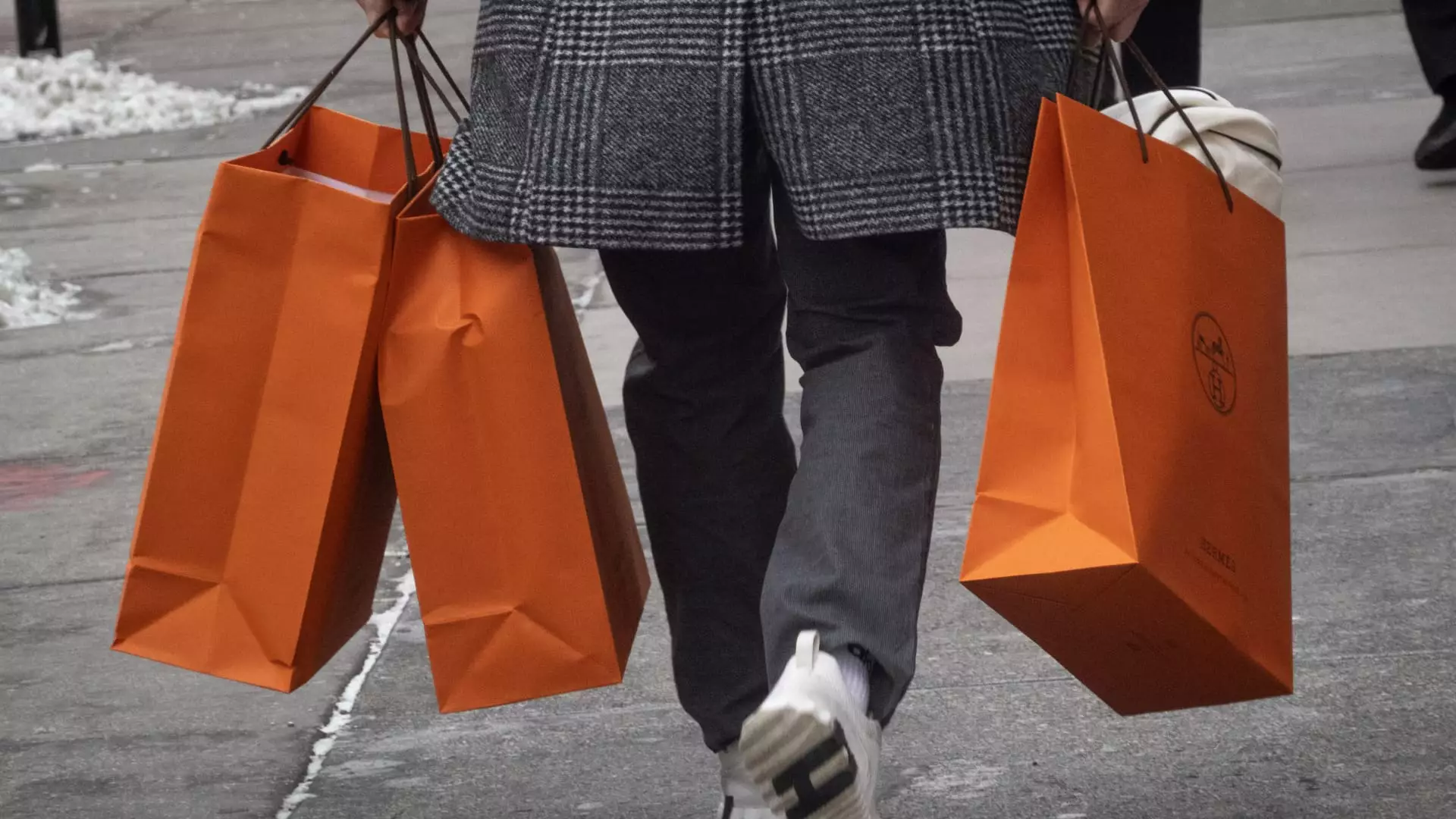The drama surrounding U.S. tariffs has shaken many sectors, but the luxury fashion industry finds itself uniquely at risk as it navigates these stormy economic waters. Europe’s prestigious brands like LVMH, Richemont, Kering, and Hermes, which once thrived under a paradigm of opulence and exclusivity, now face an unsettling future as tariffs threaten to upset the delicate equilibrium that has defined high-end consumerism. While luxury brands seem somewhat insulated from immediate repercussions, the uncertainty fungal to the global economy poses significant long-term threats to their much-coveted revival post-pandemic.
The Allure of Luxury Amidst Economic Turmoil
The luxury brand market in Europe has depended heavily on the allure of high-quality, artisanal craftsmanship that distinguishes it from other sectors. However, with U.S. tariffs being a palpable risk, those charmingly embroidered labels may soon lose their luster as economic dynamics shift. The recent announcement of a 90-day pause and a reduction in tariffs is a temporary relief but does little to anchor the floating fears tied to an impending recession. With JPMorgan speculating a 60% chance of a recession following Trump’s latest tariff bombshell, we must face the stark reality: this temporary pause does not preclude an eventual downturn.
Luxury brands often carry the badge of “made in Europe” as a core part of their marketing strategy, which has lured affluent consumers. Yet, the current geopolitical climate is questioning whether this elite dramatization is enough to keep these brands afloat when the global economy threatens to capsize. What happens when even the wealthy feel the sting of rising costs? Analysts have rightly pointed out that shifting these burdens onto consumers might not sustain luxury brands in the looming economic uncertainty.
Pricing Anxiety: The Strain on Wealthy Consumers
As tariffs drive up costs, the expectation is that luxury brands will pass these increases onto their customers. Yet, a subtle yet real concern is emerging: how much premium can the high-end customer actually bear? Analysts highlight that even affluent clientele have their limits when it comes to price surges, especially in the face of economic instability. This is a tragedy, not only for the luxury marketers seeking growth but also for the very image of unassailable wealth that these brands present.
What we are witnessing is a gradual erosion of customer confidence. Turnout reports indicate that sales figures, previously suggesting a steady recovery, are now laden with hesitation. The prospect of luxury demand taking a hit leads us to ponder whether we are dealing with a simple post-pandemic recovery or the harbinger of a deeper economic malaise. The temptations of renewed purchases in luxury are being tempered by the cold reality of global stock market volatility, casting a pall over high-end purchases.
A Shift in Global Consumption Patterns
The current landscape is additionally complicated by a waning appetite in China, a market that has historically fueled luxury growth. With the U.S. imposing steep tariffs on Chinese imports, an already delicate situation is fraught with unpredictability. Analysts are cognizant that the transition of luxury brand strategy toward the U.S. market may be a double-edged sword. As less reliance on China becomes a strategy, the tariffs could precipitate not only a price increase but an almost existential questioning of loyalty among consumers. Will they continue lavish spending or turn their gaze toward less costly alternatives?
With luxury brands generating a mere 15% to 30% of sales from the Americas, jitters are growing about their ability to weather this economic storm. While some analysts point to brands like Hermes and Burberry as resilient, can we really rely on name recognition alone to ride out potential economic storms? The answer seems dubious at best when most of their success has been deeply intertwined with global economic health.
As shares of major European luxury brands see reductions, the atmosphere surrounding this once-vibrant industry feels increasingly suffocating. The exuberance of the customer base, hesitant at best, raises serious questions about not just profit margins but also the future trajectory of luxury consumption. With looming tariffs, possible recession, and shifting demand, luxury brands need to strategize against uncertainty. The delicate balance that made high-end brands so coveted is inexplicably at risk, and unless these prestigious labels can adapt to rapid changes in economic dynamics, they may find themselves at the brink of a downturn that will leave many behind. The luxury narrative is shifting, questioning how many can truly remain “unaffected” amidst turbulent global currents.

